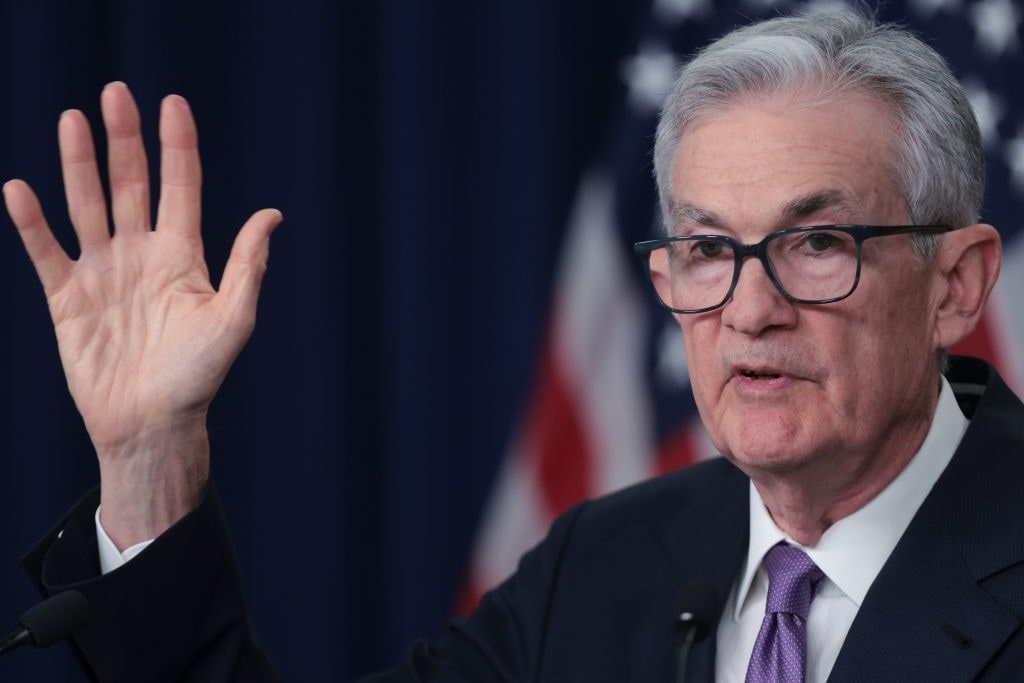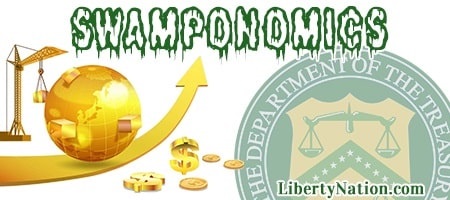Rate cuts coming, the return of eggflation, and trillions for weak manufacturing.
In the Super Bowl of Economics, the Federal Reserve hosted its final Federal Open Market Committee (FOMC) policy meeting of 2023. Like Super Bowl LI, the powwow of central bankers did not disappoint. While officials left interest rates unchanged at a range of 5.25% and 5.5%, investors cheered the Summary of Economic Projections (SEP) and the post-FOMC press conference. But the Fed get-together suggested that occupants inside the Eccles Building do not know what they are doing, or they are purposely deceiving the public and the financial markets.
Federal Reserve Signals Rate Cuts
According to the SEP data, the Fed is signaling three rate cuts in the next year and two more in the following year, with the median Fed funds rate sliding to 4.6% in 2024 and 3.6% in 2025. By 2026, the terminal rate is expected to come in at 2.9%. Looking ahead, the debate on Wall Street is about the timing of easing monetary policy. The futures market is penciling in the first rate cut as early as March 2024, although market analysts say the likelihood is in June.

Jerome Powell (Photo by Win McNamee/Getty Images)
But why the sudden turnaround? Fed Chair Jerome Powell had insisted in several recent discussions, including a Dec. 1 appearance at Spelman College, that it would be premature to talk about rate cuts and that none of his colleagues entertained the possibility of loosening conditions. Instead, he told reporters on Dec. 13: “The question of when will it become appropriate to begin dialing back the amount of policy restraint in place, that begins to come into view and is clearly a topic of discussion now in the world and also a discussion for us at our meeting today.” New York Fed President John Williams then appeared to contradict the central bank chief by telling CNBC that “we aren’t really talking about rate cuts right now.” Atlanta Fed President Raphael Bostic, meanwhile, says rate cuts might happen by the third quarter.
Traders were confused to finish the trading week. After a monumental rally that saw the Dow Jones Industrial Average climb above a record high of 37,000, stocks ticked lowered as everyone tried to figure out what was happening at the world’s most powerful institution. Whatever the case, if the Fed is being forthright with its intentions to cut rates in 2024, some analysts have observed two things. First, the Federal Reserve might be reckless in engaging in easy money talk as inflation remains above-trend. Second, the Eccles Building could be perceived as being political by cutting rates in an election year.
The Return of Eggflation?
 While everyone was focused on the Federal Reserve, the nation’s top egg producer and distributor quietly announced that egg-laying hens at a mega-industrial farm in Kansas were hit with the highly pathogenic avian influenza, also known as the bird flu. Cal-Maine confirmed that 684,000 hens, or nearly 2% of its total inventory, were infected with the HPAI. This forced the company to suspend operations and employ safety measures provided by the US Department of Agriculture.
While everyone was focused on the Federal Reserve, the nation’s top egg producer and distributor quietly announced that egg-laying hens at a mega-industrial farm in Kansas were hit with the highly pathogenic avian influenza, also known as the bird flu. Cal-Maine confirmed that 684,000 hens, or nearly 2% of its total inventory, were infected with the HPAI. This forced the company to suspend operations and employ safety measures provided by the US Department of Agriculture.
The re-emergence of the bird flu could reignite eggflation. Earlier this year, egg prices had skyrocketed to record highs as collapsing supply and strong demand resulted in shoppers taking out second mortgages to fund their egg purchases. Since May, the Urner Barry Egg Index has soared 190% to $1.39. Additionally, the producer price index revealed that prices for chicken eggs spiked 71% month-over-month and rose 2.2% month-over-month in the consumer price index.
This is an eggceptional time for eggflation.
Trillions for What?
Over the last couple of years, the trifecta of legislation – the Inflation Reduction Act, the US Chips and Science Act, and the Bipartisan Infrastructure Law – resulted in trillions of dollars being spent on manufacturing. This has included corporate welfare for domestic and foreign companies, including firms located in China. By now, it would seem like the US manufacturing sector would be rocketing. Instead, the industry is stuck in a recession.
Industrial production rose a smaller-than-expected 0.2% in November and fell 0.4% year-over-year. Manufacturing output jumped at a lower-than-expected 0.3% last month and declined 0.8% year-over-year. Plus, the Federal Reserve data revised the October numbers lower. Capacity utilization rates fell short of the consensus estimate of 79.1%.
The S&P Global Manufacturing Purchasing Managers’ Index (PMI), a measurement of the sector’s trends, ended the year in contraction territory. In 2023, it touched the expansion ground just two times. “Manufacturing meanwhile remains a drag on the economy, with an increased rate of order book decline prompting factories to reduce production, cut back on headcounts and scale back their input buying,” said Chris Williamson, the chief business economist at S&P Global Market Intelligence, in the report. “Despite the December upturn, the survey therefore signals only weak GDP growth in the fourth quarter.” On the service sector side, input cost inflation, a main measurement of the Fed’s core inflation fixation, remains sky-high.
Is the Federal Reserve pivot truly premature? Perhaps Powell’s Dec. 1 comments were accurate.

